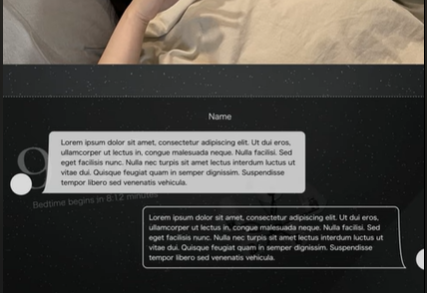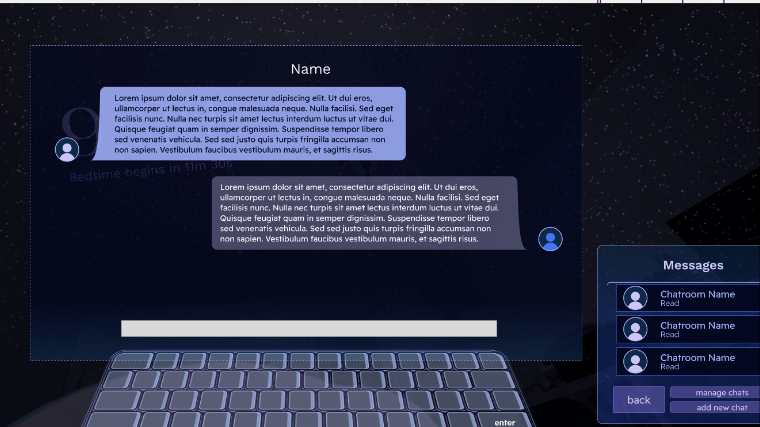MR Design
Goodnight Sleeping Mask
by Team ASK
International students may feel lonely during their studies abroad. How can domestic and international students connect and improve their mental health?
See the app prototype here.
To help with the rising mental health challenges among post-secondary undergraduate students, particularly international students, we created a prototype of a Mixed Reality (MR) experience.
In a group with Selena Avril Lee and Aydan Nardi, we conducted preliminary research, created personas, user journey maps, user flow maps, user story maps, and wireframes, conducted thematic analyses, user testing & analysis, and created low-fidelity and high-fidelity app prototype using Figma.
Our Goal
Project Objectives
To promote better sleep hygiene
Help with night time loneliness
Improve the social connection amongst international and domestic undergraduate students
What do we want to create?
Wireless XR glasses designed to be as comfortable, lightweight, and breathable as a sleeping mask; capable of operating programs with gesture-based interactivity. For now, we will only create the interactive prototype.
The First Couple of Steps…
Each group member presented their ideas from the previous project on how to solve this problem. We then took the idea of making a virtual reality sleeping mask.
We created user journey maps, user flow maps, user story maps, personas, and personas. We did a lot of brainstorming and collaboration.
Other important components
We created our very own brand style guide. This included creating a logo, a color palette, a brand personality, buttons, and input fields, complex components, and other styling rules.
Accessibility is extremely important, so we evaluated the concept of universal design. Our context was 10 years into the future.
Next, we imlpemented our improvements into our prototype, then conducted another round of interviews for more actionable design changes.
Research and Implementation
Our user testing and analysis started with our research protocol, consisting of think-aloud walkthroughs, usability surveys, and consent forms for undergraduate university students aged 19-21.
From there, we implemented actionable design changes into our second iteration. Getting user input was extremely helpful to us in order to make the design as cohesive as possible.




